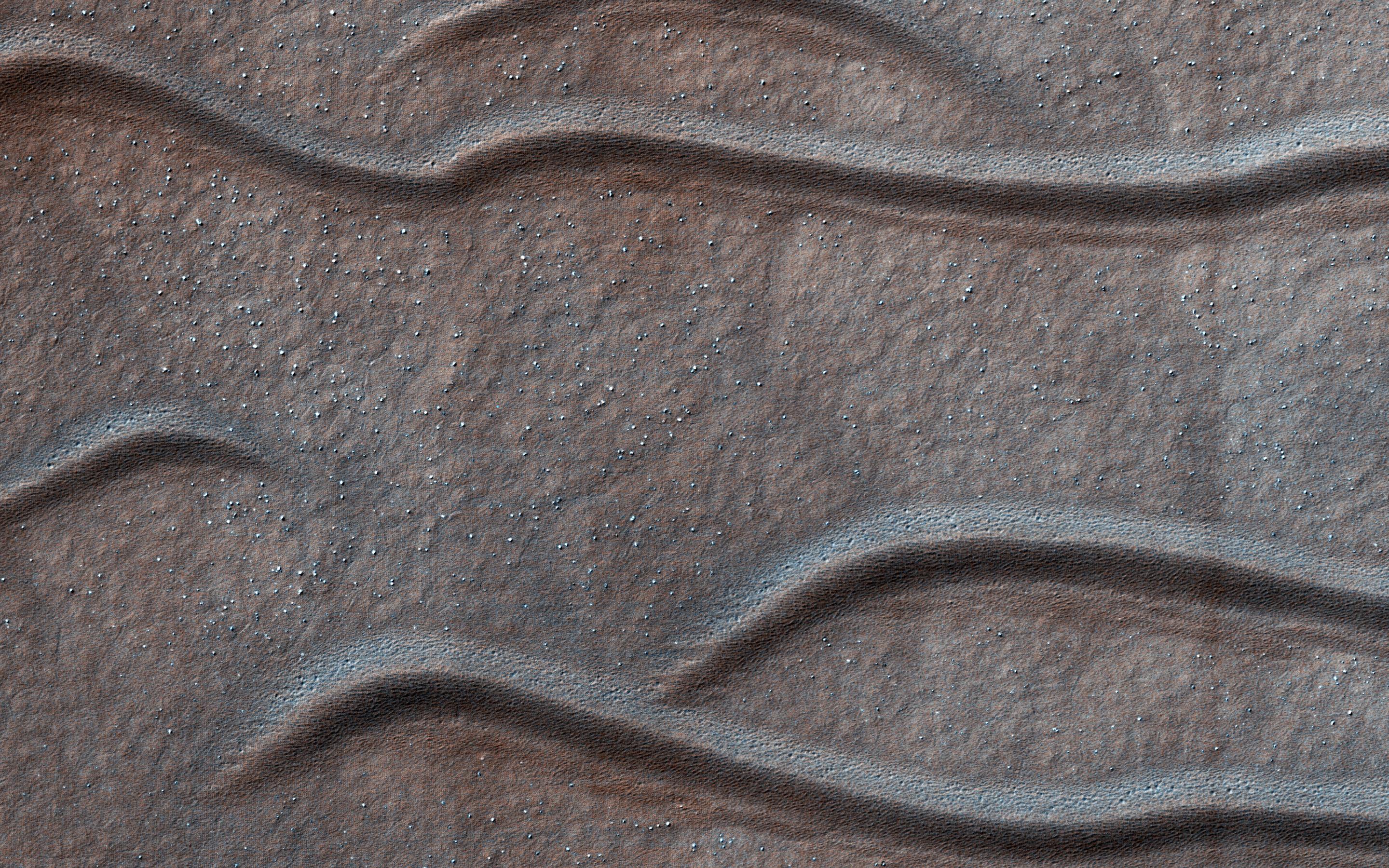
|
Sand Waves of Southern Mars
- Click the image above for a larger view
- Full-Res JPEG (2880 x 1800) (1.3 MB)
- Full-Res TIFF (2880 x 1800) (15.6 MB)
Caption:

Map Projected Browse Image
Click on image for larger version
Dune-like sandy landforms (or bedforms) self-organize into distinct shapes and patterns as dictated by wind conditions and other factors. The spacing and frequency of migration for bedforms will partially depend on the particle size range of local sediment. Larger coarse sand tends to "roll" during less frequent wind gusts, as compared with smaller more-mobile grains that "hop."
This image in the Southern Hemisphere region of Terra Cimmeria displays an unusual class of hybrid bedforms. They display a consistent shape and tone, but range several orders of magnitude in size or spacing. The smallest examples here are less than 10 meters in spacing while larger ones are separated by several hundreds of meters . This is unusual variability for bedforms that evolve over long time scales and consistent climate of recent Mars. A Mars geomorphologist might classify some of these as small dunes or giant ripples, depending on their perspective.
The map is projected here at a scale of 25 centimeters (9.8 inches) per pixel. (The original image scale is 25.1 centimeters [9.9 inches] per pixel [with 1 x 1 binning]; objects on the order of 75 centimeters [29.5 inches] across are resolved.) North is up.
Background Info:
The University of Arizona, in Tucson, operates HiRISE, which was built by Ball Aerospace & Technologies Corp., in Boulder, Colorado. NASA's Jet Propulsion Laboratory, a division of Caltech in Pasadena, California, manages the Mars Reconnaissance Orbiter Project for NASA's Science Mission Directorate, Washington.
Cataloging Keywords:
| Name | Value | Additional Values |
|---|---|---|
| Target | Mars | |
| System | ||
| Target Type | Planet | |
| Mission | Mars Reconnaissance Orbiter (MRO) | |
| Instrument Host | Mars Reconnaissance Orbiter | |
| Host Type | Orbiter | |
| Instrument | High Resolution Imaging Science Experiment (HiRISE) | |
| Detector | ||
| Extra Keywords | Color, Dune, Map | |
| Acquisition Date | ||
| Release Date | 2021-08-20 | |
| Date in Caption | ||
| Image Credit | NASA/JPL-Caltech/University of Arizona | |
| Source | photojournal.jpl.nasa.gov/catalog/PIA24862 | |
| Identifier | PIA24862 | |
